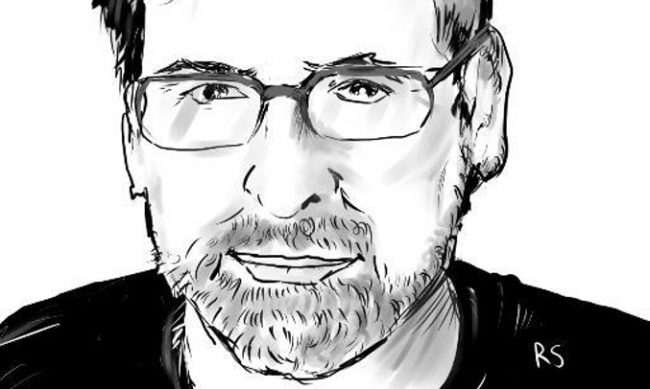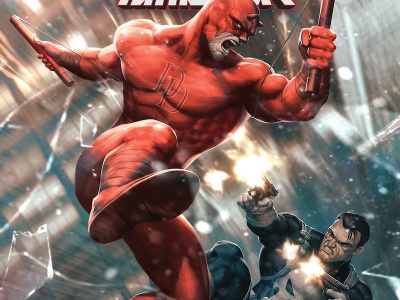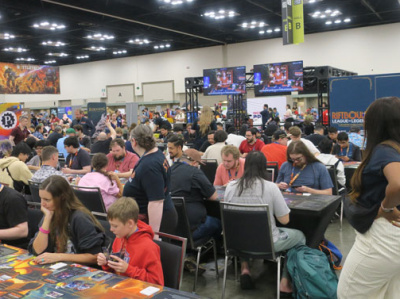It has been said that big changes happen gradually and then suddenly. That’s certainly the case with the recent panic around the fate of the Direct Market (see "It’s Nearly 2024 and I’m More than Concerned" and “The World According to Griepp: Can Comics Be Saved?“). This particular handwriting has been on the wall since at least the late 1990s, when people were already making complaints about the insularity and unsustainability of a model that depends on selling a shrinking core of habitual customers an increasingly expensive niche product in the face of rising competition from other more satisfying, cost-effective sources of entertainment.
For at least the past 15 years, the Direct Market has had the opportunity to adapt to changing customer habits, while benefiting from billions of dollars in marketing for their products courtesy of the folks at Marvel Studios, Warner (in its various incarnations), Sony and the rest. They got a reprieve when the existential threat of digital distribution turned out to be a fizzle, and when a global pandemic turned into a sales boom for all kinds of entertainment and collectibles.
The two pillars of superhero appeal: collectability and continuity. But for all the lip service given to potential other ways of doing business, a large number of traditional Direct Market stores still depend on hardcore enthusiasts and collectors. I have heard a few retailers speak both publicly and privately about the importance of variant editions – much disparaged in some quarters – as a vital revenue lifeline. And why? Because enough customers believe there is enough value in these manufactured collectibles to pay a premium for them.
Is there a genuine secondary market demand for random variant covers six or twelve months after the books have come out? Are the people who pay for them completist-collectors of a specific title or artist, or are they hoping for a return on investment down the line? I have no idea, because I personally find the topic one of the most tedious in the business. I don’t want to tell others how to spend their money, but this particular fetish has always baffled me, and it seems a slim reed to hang the financial fortunes of the industry on.
Losing the thread on continuity. The more substantial lifeline when it comes to sales of serialized superhero comics is continuity. The cover of a book is skin deep, but story goes right to the bone. There’s an established value to character first appearances, key storyline developments and other turning points in long-running stories that trigger an emotional investment of longtime readers.
Say what you want about the sprawling, drawn-out epics of Jim Shooter and 1990s-era Marvel, but they knew how to create crescendos and payoffs in the storytelling that stoked the enthusiasm of longtime fans and created genuine excitement, even if some of it was incomprehensible to less experienced readers.
Editorially, neither Marvel nor DC has been able to recreate that in quite some time. Partly this is due to event-fatigue, a much commented-on phenomenon that dates at least to the mid-aughts, if not earlier, but partly from the continuous reboots and renovations of continuity that leave habitual readers with less familiar material to connect with. In the meantime, efforts to hook new readers on updated versions of the tried-and-true concepts have not been markedly successful, at least if you’re not a Turtle.
Again, the publishers had more than a decade to try to fix this, as Hollywood got legions of normies accustomed to the tropes of continuity-based superhero storytelling. Now there are signs that wave might be crashing on the shore, at complaints about the byzantine narratives of the post-Endgame MCU and the failed attempts to get anyone to care about DC’s onscreen continuity beyond Batman have finally started to show up in diminishing box office receipts.
People still crave serialized storytelling: turn on any TV or streaming service for proof of that. But the plot-intensive marriage of superheroics and soap opera that the Big Two (especially Marvel) basically invented now looks like a spent force in popular culture. In other words, it may be too late for comics to use this time-honored hook to appeal even if they still remembered how to do it right.
A less super future. If superheroes remain the keystone of Direct Market prosperity, and the two pillars of superhero comics (collectability and continuity) are crumbling, what then? As this publication, this writer and this column have made clear hundreds of different ways and times (see “ICv2 Insider Talks: The Future of the Direct Market”), there are paths forward for comics that seem lucrative and straightforward, based around sales of trade books, manga, Webtoons and other formats, and in converting stores into more experience-oriented destinations with events, game nights, community involvement and more.
Many in the Direct Market have embraced these lifelines and found some success. But they pose challenges for traditional comic stores because they don’t necessarily appeal to the same kind of week-to-week, high-value, reliable customers that come for their superhero fix at a time when publishers aren’t giving those fans anything worthwhile. Retailer Brian Hibbs described this situation well when he wrote “it's even a struggle for us these days as the periodical market gets largely strangled by its very (and varied) caretakers.” (see “Brian Hibbs of Comix Experience on ‘Can Comics Be Saved?’"). Given a choice of how to spend scarce resources: on risky products that appeal to an unproven new customer segment, or overserving dependable customers, it’s clear where many retailers placed their bets.
Same problems, different decade. This situation is maddening because I feel like a wrote about these same topics, using almost the same language, more than a decade ago when I first surveyed the industry in my book Comic-Con and the Business of Pop Culture.
To the question in the title of this column, the answer is a resounding “I don’t know.” As always, the biggest problem may be that if a critical mass of stores close, there won’t be enough left to support the publication and distribution of single issues, even if the survivors are capable of making money in a post-superhero comics world.
We’ve been down this path before, of course, and the resilient folks in the DM have found ways to avoid their certain fate. This time feels different, though. I hope the industry has not missed its last opportunity to miss an opportunity.
For more on the Direct Market on its 50th anniversary, see "Direct Market 50th Anniversary."
The opinions expressed in this column are solely those of the writer, and do not necessarily reflect the views of the editorial staff of ICv2.com.
Rob Salkowitz (@robsalk) is the author of Comic-Con and the Business of Pop Culture and an Eisner-Award nominee.

Column by Rob Salkowitz
Posted by Rob Salkowitz on December 5, 2023 @ 3:19 pm CT
MORE COMICS
Inside and Outside the Con
August 7, 2025
Cosplayers and re-enactors showed off their talents both inside and outside the convention center.
'Daredevil/Punisher: The Devil's Trigger' to Launch in November
August 7, 2025
Daredevil/Punisher: The Devil’s Trigger will bring the two into conflict with each other and the New York underworld starting in November.
MORE COLUMNS
Column by Jeffrey Dohm-Sanchez
August 7, 2025
ICv2 Managing Editor Jeffrey Dohm-Sanchez lays out the hotness of Gen Con 2025.
Column by Rob Salkowitz
August 5, 2025
In this week's column by Rob Salkowitz, he looks at the industry's biggest show, held in the midst of some existential issues.








